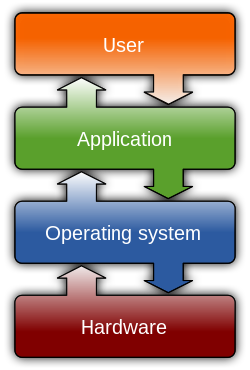 Image by Ivan Walsh via Flickr
Image by Ivan Walsh via Flickr- build from the ground up
- invest in an enterprise software application and professional services
- build your app on the Salesforce platform and still write loads of code

Business processes, business technology, online marketing. I am Phil Ayres, 20 years in enterprise software and business improvement. And blogging on and off since 2006.
 Image by Ivan Walsh via Flickr
Image by Ivan Walsh via Flickr
 Image via WikipediaIts interesting that as soon as a company grows large enough to fill more than a shared services office space, they consider themselves big enough to throw money around like crazy. I offered my thoughts to reporter writing a story about how small and mid-sized businesses could save money in the IT department, and realized that many small businesses are way ahead of their bigger cousins in terms of working more cost effectively -- without losing anything in the way they work.
Image via WikipediaIts interesting that as soon as a company grows large enough to fill more than a shared services office space, they consider themselves big enough to throw money around like crazy. I offered my thoughts to reporter writing a story about how small and mid-sized businesses could save money in the IT department, and realized that many small businesses are way ahead of their bigger cousins in terms of working more cost effectively -- without losing anything in the way they work.
 Image via Wikipedia
Image via Wikipedia
Amazon, in its new incarnation as cloud computing provider, has announced that its EC2 service will have the ability to run Microsoft Windows Server or SQL Server before the end of the year. Why does this matter?
Companies are under pressure to deliver applications for a better total cost of ownership than ever. This isn't just a matter of cheaper software and less sys admins to support it. Already we see the importance of virtualization, helping reduce the cost and increase the flexibility of corporate server rooms, at least for the products that certify themselves to run under products such as VMWare. Side this with the new 'green' push of Intel, AMD, Sun, etc - to show a reduced cost of electricity powering and cooling the masses of servers that are still required, and the complexity of organizing server rooms to do so. According to Sun, 25% of IT budgets is consumed by energy costs.
So why not just save the valuable office space that server rooms have expanded to overtake, the power costs, complex network wiring, and the cost and risk of knowing how to, and actually doing this infrastructure stuff well? Just deploy your applications to the 'cloud', make sure you have a powerful and fault-tolerant Internet connection, and away you go.
Does this work for your critical business processes, perhaps run by a business process management (BPM), enterprise content management (ECM) or traditional imaging and workflow solution? AIIM talks about SaaS for ECM, and adds some nice commentary on the key tests for an organization selecting a SaaS solution: does SaaS meet the tests of speed, functionality, cost, flexibility and suitability?
Since BPM should be about running your differentiated processes, the cookie cutter approach to cost effective SaaS solutions may not be appealing. But when you have the ability to build exactly your solution and run it in the cloud on a common Windows operating system and database, BPM might become viable without complex infrastructure requirements (at least those that your boss can see).
A post from the Improving New Account Opening blog